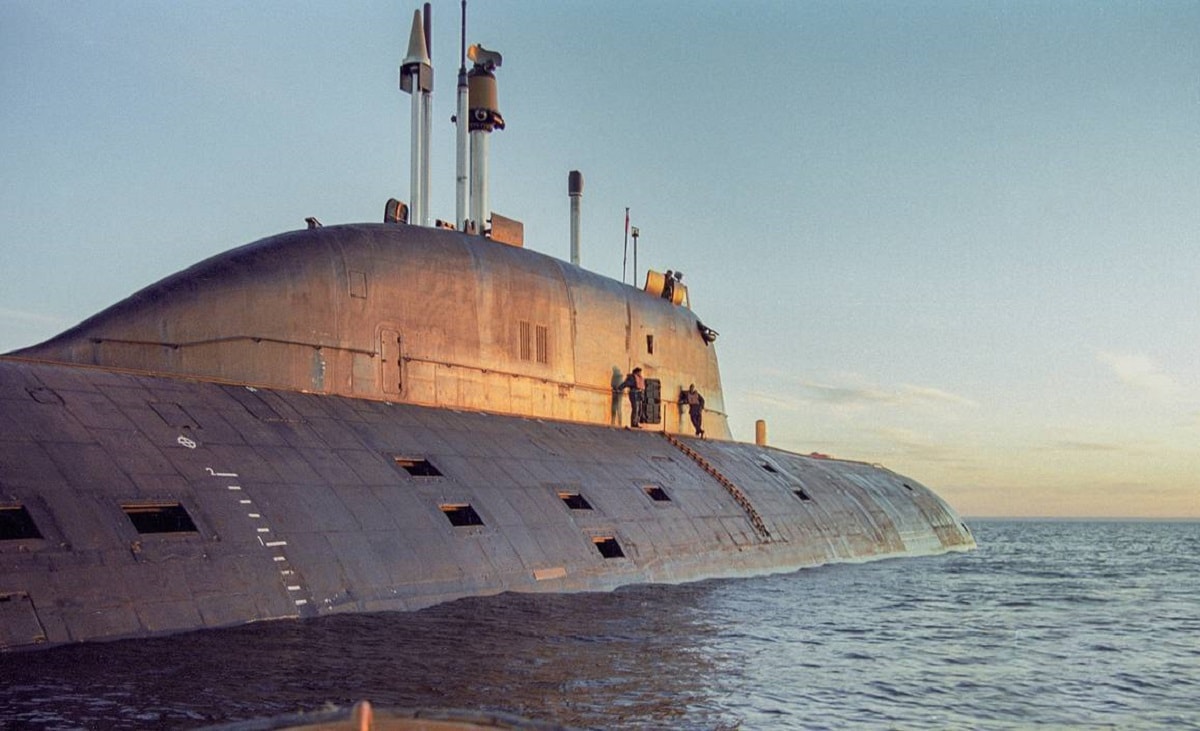Meet the Poseidon – As the country with the world’s largest nuclear arsenal, Russia has touted various novel delivery systems in recent years as arms control agreements have steadily broken down. Recent testimony from the commander of the United States’ Indo-Pacific Command has drawn attention to the Poseidon, a nuclear torpedo that is reportedly slated to enter Russian service in the near-term future. However, since most information available on the weapon is from official Russian sources, it is difficult to independently assess the torpedo’s effective characteristics.
Russia’s Poseidon has been presented as a true superweapon by Russian state media and leaders. As recently as May 1, Russia’s jingoistic TV anchor Dmitry Kiselyov touted the capability of the Poseidon to destroy the United Kingdom with a 500-foot radioactive tsunami. Not much is known about the Poseidon beyond the fact that it is powered by a nuclear engine and is likely 80 feet in length. The nuclear-capable missile is likely able to travel autonomously at up to 56 knots with a maximum range of 6,200 miles and a maximum depth of more than 3,280 feet.
This, on paper, would make the Poseidon near-impossible to stop on its way to a coastal city which it is targeting, especially if Russia produces the 30 or so it is thought to hope to manufacture.
Poseidon: The Design
The Poseidon nuclear torpedo was designed to operate in tandem with the Russian K-329 Belgorod submarine, a heavily modernized version of a Soviet Oscar-II nuclear submarine. Known also by its NATO designation “Kanyon” and its alternate Russian name “Status-6,” the Poseidon was flaunted in 2018 by Russian President Vladimir Putin as an undefeatable submarine-based nuclear delivery system alongside Russia’s novel Kinzhal, Avangard, and Sarmat nuclear delivery systems. Such delivery systems were grouped together by Putin and other Russian leaders as supposed superweapons capable of penetrating even the most advanced missile defenses. Russia had first hinted at the existence of the nuclear torpedo in a bizarre 2015 leak of a page with schematics and specifications of the Poseidon on the Russian state-owned TV network NTV. The existence of the weapon was confirmed by the Pentagon in 2016, and since then the Poseidon has been periodically tested.
In his May 17 testimony to the House Appropriations Committee, Indo-Pacific Command Commander Admiral John Aquilino stated that Russia was likely to deploy the Poseidon’s host submarine Belgorod in 2022. While Aquilino’s statement of the arrival of the submarine did not indicate if the Belgorod would be immediately equipped with the Poseidon, one of the Belgorod’s principal functions will be to carry and employ Poseidon torpedoes.
Really a Threat?
Despite the Belgorod’s deployment being reportedly imminent according to Aquilino, previous U.S. intelligence on the subject reportedly suggested that the nuclear torpedo would not be deployed until 2027. While it is possible that Russia’s leadership would seek to expedite the development of what it promotes as a prestigious weapon of an advanced nuclear power, Russia’s defense industry is not known to finish projects under budget and ahead of schedule, to say the least.
While Putin has occasionally raised the prospect that Russia could use nuclear weapons in Ukraine, the Poseidon would be of little use to Russia even if it were to choose that path, as it would be exceedingly difficult to maneuver the Belgorod into the Black Sea through the Dardanelles in secret from the torpedo’s test locations in the Arctic.
Clearly the Poseidon is a worrying Russian weapon to ponder, it is yet to be seen if Russia will be able to deploy it in the numbers it hopes to, and if it would be as effective and revolutionary as claimed.
Wesley Culp is a Research Fellow at the Center for the Study of the Presidency and Congress. He regularly writes on Russian and Eurasian leadership and national security topics and has been published in The Hill and the Diplomatic Courier. He can be found on Twitter @WesleyJCulp.
Note: This piece has been updated since publication.

